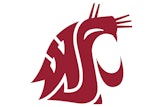On schedule to be completed by 2020, the future home of the Los Angeles Rams and Chargers is three and a half times the size of Disneyland and twice as big as Vatican City. At a cost of well over $5 billion, the development includes a 70,240-seat stadium (with expanded capacity of 100,000 for special events) and a 6,000-seat performance center under one roof, surrounded by a 298-acre complex of office buildings, shops, restaurants, residential units, hotels and parks. A 250,000-square-foot West Coast headquarters for NFL Media and the NFL Network will be constructed on the site in stages.
By far the most ambitions project in NFL history, observers wonder if the LA Stadium & Entertainment District at Hollywood Park is an anomaly or the blueprint for professional sports facility development.
Writes Liz Clarke of The Washington Post, "After decades in which taxpayers shouldered much of the cost of new sports arenas, the privately funded stadium is being closely watched as a potential new model for first-rate NFL venues built without public subsidies. To succeed, the development’s proponents say, the stadiums of tomorrow can’t exist as stand-alone buildings used for just 10 or 20 NFL home games a year; they must be flexible, multipurpose facilities embedded in complex commercial developments that attract customers and events year-round."
From AB: How Stadium Construction Costs Reached the Billions
NFL owners agreed in March to raise their debt waiver to accommodate the Los Angeles project, helping cover the cost of the stadium and essential infrastructure such as utilities, parking lots and roads. As it does with every new stadium in the league, the NFL will extend its standard loan of $200 million per team toward the new venue's construction costs.
Beyond the loan, Rams owner E. Stanley Kroenke is investing $1.6 billion of personal equity, "an unprecedented investment among NFL owners, who have a rich tradition of building stadiums with other people's money," Clarke writes.
Both tenants will rely on another common fundraising approach — seat licenses. The Rams’ prices are slightly more than the Chargers' — ranging from $1,000 to $15,000 per seat, depending on location and amenities. Licenses for club seats run $15,00 to $100,000. In a first, however, both teams will refund the full price of the seat licenses after 50 years, according to the Post.
Additional funding will come from stadium naming rights and sponsorships of other facets of the project, including a suspended dual-sided video board called the "Oculus" that will span the length of the field.
"This is a really good deal [from a public-policy standpoint] compared to virtually any football stadium that has been built in the last 30 years," Stanford University economist Roger Noll told the Post. By comparison, Noll calls the relatively modest $1.8 billion stadium being constructed in Las Vegas for the relocating Oakland Raiders one of the worst deals in sports history, with Las Vegas and Clark County handing the Raiders a $750 million subsidy, and the state of Nevada committing $200 million to upgrade freeways to reach the site.
"If the Los Angeles stadium indeed represents a new model, it may not be replicable," writes Clarke, given the combined wealth of Kroenke and his wife, Walmart heiress Anne Walton Kroenke, estimated at $15.1 billion. "It's doubtful a project so grand would work in markets outside New York or Los Angeles. In addition to hosting the 2022 Super Bowl, the stadium, whose capacity can be stretched to 100,000 for mega-events, will host the 2023 college football championship, the 2028 Olympics' Opening and Closing ceremonies and is vying to host 2026 World Cup matches.
"Moreover, the project is uniquely tied to Kroenke's vision of where global sports and entertainment are heading and his zeal to be at the forefront. In addition to the Rams, Kroenke is the primary owner of London's Arsenal soccer club. He owned the NBA's Denver Nuggets and NHL's Colorado Avalanche before placing them in a family trust."





































